SAN ANTONIO — It’s perhaps easy for non-artists to have a narrow definition of what constitutes “drawing”—some lines here, some lines there, voila. For most of us, adding a splash of color, depth or texture might mean moving into a different realm of art altogether.
But several Alamo City artists are working to expand the notion that drawing is merely the foundation for a great work. That’s the idea behind a homegrown new exhibit at the McNay Art Museum which opened this month and showcases how drawing is a spectrum that stretches far beyond stick figures or sketches on scratch paper.
“Contemporary artists take a traditional medium like drawing, which we all have these conceptions of what it’s about – pen and ink on paper, graphite paper – and it’s interesting to see other people challenging those boundaries,” said Lyle Williams, a co-curator of “Drawn in San Antonio—Today.”
Whatever McNay visitors’ own preconceptions about what drawing entails, it may be best to leave them at the museum’s doors. “Drawn in San Antonio—Today” features works from nearly two dozen creators utilizing everything from video and sound to materials you’re more likely to find at a construction site than an artist’s studio.
The exhibit was conceived of in 2020 by Williams and his collaborator, Rafael Fernando Gutierrez Jr., as a way of supporting local artists during a period when COVID-19 had dimmed the lights at community galleries.
Once the duo started inquiring about potential inclusions for “Drawn in San Antonio—Today,” the rest happening organically as the city’s network of creative personalities proved how well-connected they are. Some even nominated each other to be part of the exhibit.
“We’re really trying to explore the landscape of drawing in San Antonio,” Gutierrez said. “Of course, we couldn’t include everyone that we’d like to. But we did a substantial amount of studio visits, had a lot of great conversations and selected works that we felt like would be a great survey of contemporary drawings.”
"Drawn in San Antonio—Today" runs through Sept. 11, and is free with general admission to the museum.
KENS 5 talked to some of the artists featured in the exhibit about their work, their inspirations and their perspective on drawing as a format without limits. Read on to see what they said.
Kim Bishop
Growing up as the child of a single mother in Austin, Kim Bishop’s grandparents played a big role in her upbringing—and continue to shape her as an artist years later.
She recalls her grandmother’s attempts to teach her sewing, which never really took hold. But even after she passed away more than 20 years ago, her sewing box is an item that’s never left Bishop’s possession.
For her McNay-featured piece, she used some of that very same thread once used to make clothes, napkins and decorations as the primary material for a delicate self-portrait that does away with notion that drawing has to involve pens or pencils.
“Now that I have just turned 60 years old, I see a lot of her in me,” Bishop said. “So to use a needle and thread to create my self-portrait, it seemed appropriate to use hers. After all, I am made of her—I am my grandmother’s thread.”
The process of creating “My Grandmother’s Thread” – using a tiny needle as her instrument and fragile rice paper as her canvas – forced Bishop to “slow down and think about what I’m doing.”
“It’s like a dance with small breaths,” she said.

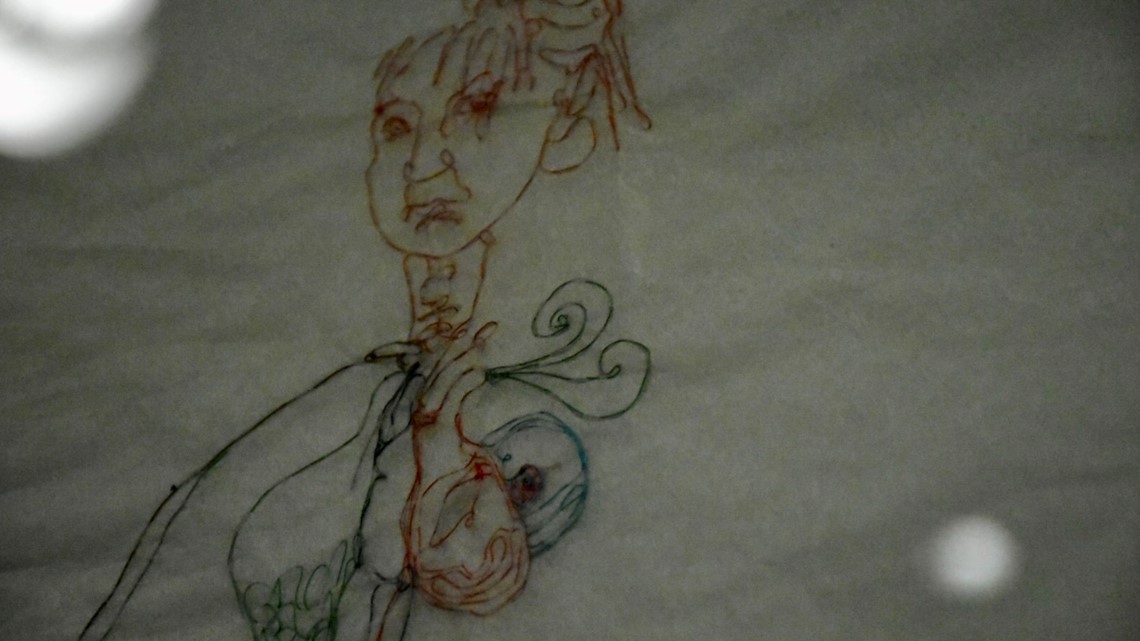
The McNay showcase brings things full circle; she remembers summer road trips with her grandparents which would include stops at the San Antonio museum, where she was introduced to art history.
Now a teacher, Bishop has fully dived into her art after hosting her first exhibition when she was just 9. Her work has since been shown in a variety of formats, and the years of experience have cultivated a philosophy of drawing “as extensions of myself.”
“Drawing is more than applying a medium to a surface or copying one image to another plane,” she says. “It’s the conversation that the surface, the medium and the process have with each other.”
Follow Bishop on Instagram at @kimbishop6787.
Humphrey Kaye Rogers
As a Black artist whose favorite big-screen characters growing up were white – from James Bond to Rocky to Marty McFly – Humphrey Kaye Rogers’s evolution as an artist eventually led him to wonder what it could mean if those figures were portrayed by someone who looked like him.
The curiosity led to the creation of “Freeze, Sucka!,” a series of pieces the Houston native developed by exploring the intersection of pop culture, identity and artistic empowerment. A few of those works, reimagining an Old West-set trilogy-capper with Black characters, are on display at “Drawn in San Antonio—Today.”
“I felt it could be a powerful rewriting of history by placing my face in the bodies of the ‘Back to the Future’ characters,” said Rogers, 29. “Not only does it comment on the lack of opportunity for blackness to shine through the Hollywood system; it also becomes a meta-narrative of myself playfully pretending to be these characters.”

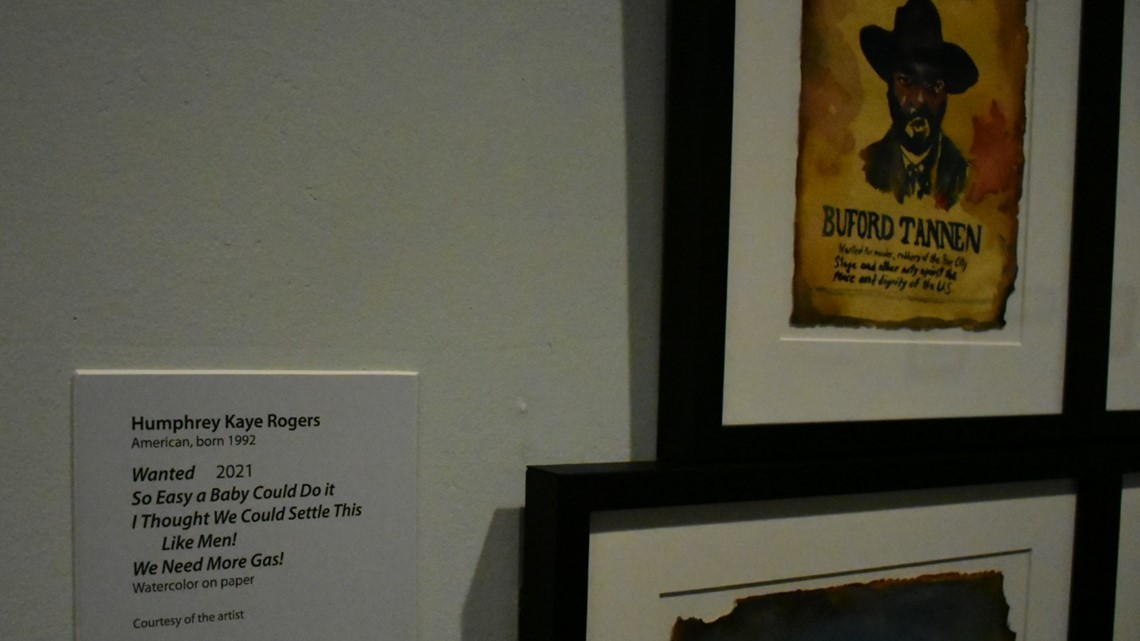
A lifelong artist who now considers portraiture his specialty, Rogers’ afrofuturistic watercolor drawings are the result of him being encouraged to find his own meaning in artistry, and in the medium he works in.
“As a child, it could mean simply making a doodle,” he said. “As a fine artist I learned the power of tapping into my own inner psyche to find out what truly mattered to me as a person. What does it mean when most of your favorite superheroes are white, for instance? What does that subliminally do to a Black child’s self-image?”
Follow Rogers on Instagram at @humphreykayeart.
Andrei Renteria Menchaca
One of the largest and most attention-grabbing pieces at the exhibit is actually made up of smaller images no less potent in what they depict—a bound man in the trunk of a car, the 2019 murders of a nine-member family by gunmen and a cartel’s assault on a border-region town among them.
Andrei Renteria Menchaca’s piece, titled “The Wrath of Mexico: An altar to the Santa Muerte,” is the result of his “hypervigilance of the news regarding organizing crime” in his home country.


Current headlines and human rights issues drive the 35-year-old’s work, as well as using unconventional materials. “The Wrath of Mexico” is depicted on several pieces of stationary, which Menchaca says has a real-world connection.
“It’s meant to expand the concept of how seemingly mundane objects can be used to demonstrate the expansion of Mexico’s organized crime groups into various parts of the world, and the consequences (of) our drug lust,” he said, adding that the eventual degradation of the material can be symbolically likened to the casualties of the drug war in a consumerist world.
Menchaca, whose work has also been featured at Blue Star, Houston’s Holocaust Museum and Alpine’s Museum of the Big Bend, said he’s attracted to unorthodox drawing techniques, and is continuously searching for new ways to “reject the traditional” in his art.
Follow Menchaca on Instagram at @andreirenteria.
Alán Serna
While it only took a few hours for Mexico-born artist Alan Serna to actually create the three pieces he contributed to the McNay exhibit – a series of photo transfers documenting his family’s ranch life merged with messages of identity, titled “Stories Campesinos” – he says the road to producing them reaches into history.
“Behind those hours are days of research and sketching,” said Serna, “as well as years of lived experience and generations of inherited cultural iconography.”
Some of that iconography can be glimpsed around the edges of his pieces, which are bordered by graph-paper drawings resembling both the cross-stitching patterns his mom made and the 8-bit videogames he remembers playing.
Centered in each of Serna’s pieces are photographic details, like a stack of tortillas and a woman hard at work, brought to life via deliberate scribbles of colored pencil; stenciled into those images are Spanish lyrics that reinforce the memories of daily life with his family in Zacatecas.
One reads “Por lo pronto no me rajo, voy de frente,” or “For now I do not crack, I go head-on.” For Serna, 29, the personal is his path to the artistic.
“These pieces, like modern-day campesinos, live between tradition and technology,” he said. “(They) depict an identity that is evolving all the time.”

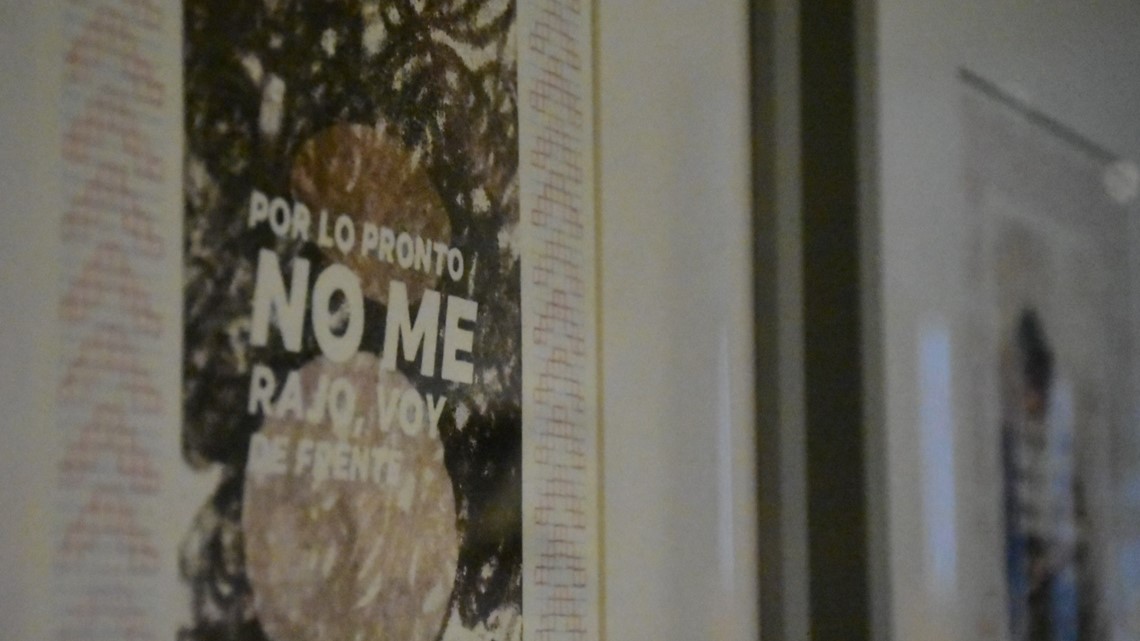
Serna’s evolving perspective on drawing stretches the traditional notion that it’s merely a pattern of lines. Lines may be basic, but in his eyes there’s not only no limits to what lines can be used to depict; there’s also no shortage of things that can be used to make them.
“Line is an element in everything,” he said. “So if we apply that to artmaking, a drawing can be anything from a scribble on paper to a wireframe rendering.”
Follow Serna on Instagram at @alanprints.
Hiromi Stringer
Glass, graphite, light bulbs and blueprints are among the traditional materials Hiromi Stringer has incorporated for her installation on display at “Drawn in San Antonio—Today.” As for the more unorthodox element, that comes in the form of audio recordings of her dog’s snores.
Stringer said she was inspired by one of the more unknowable mysteries that endures in a world where most every question can be answered with a simple Google search: Where do dreams come from?
“A dog’s dream when he/she is asleep is one of the final areas that remain unexplored, and one needs to use their imagination, instead of pre-existing knowledge, to discuss at length,” she said.

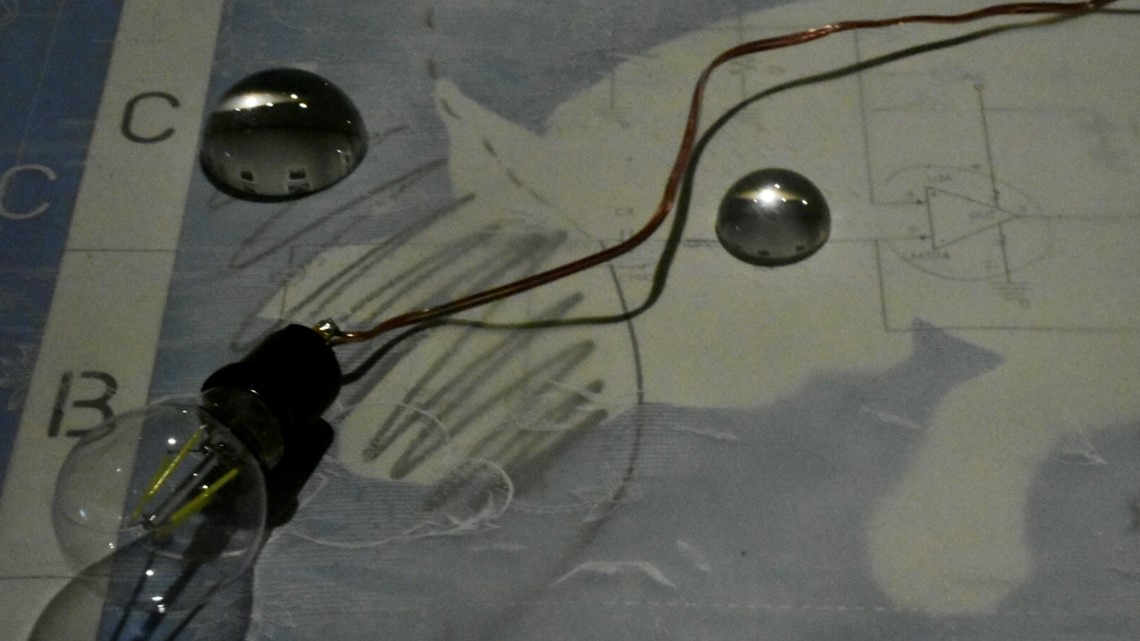
So Stringer’s artwork is an experiment meant to spurn thought, not find concrete answers. The installation – which stretches the limits of “drawing” as much as any piece in the McNay exhibit – also features a scientific component: When plugged into an outlet, the sound of her dog’s snores powers up a bulb attached to the piece. (The process can be viewed here.)
The artist said her intention is to emphasize how the familiar things in life can also have an elusive side.
“We assume that we know what a dog is. However, when a dog is sleeping and sees a dream, we have no way of knowing the contents of that dream,” she said. “Similarly, when we see an electrical circuit and a light bulb which glows, most people are not completely sure why the bulb is lit.”
Follow Stringer on Instagram at @hiromi_stringer.
Christie Blizard
One scroll through her Instagram and you’ll have a strong idea of the profound weirdness that is Christie Blizard’s art.
A performance artist who has created simple alien puppets to entire operas of surreal sights and sounds, the Indiana native’s video project “Cactus” puts a digital twist on drawing. She recalls once wanting to paint like Vincent van Gogh back in high school; what she’s created in the ensuing years may be just as hypnotic a take on an ostensibly simple artistic form.

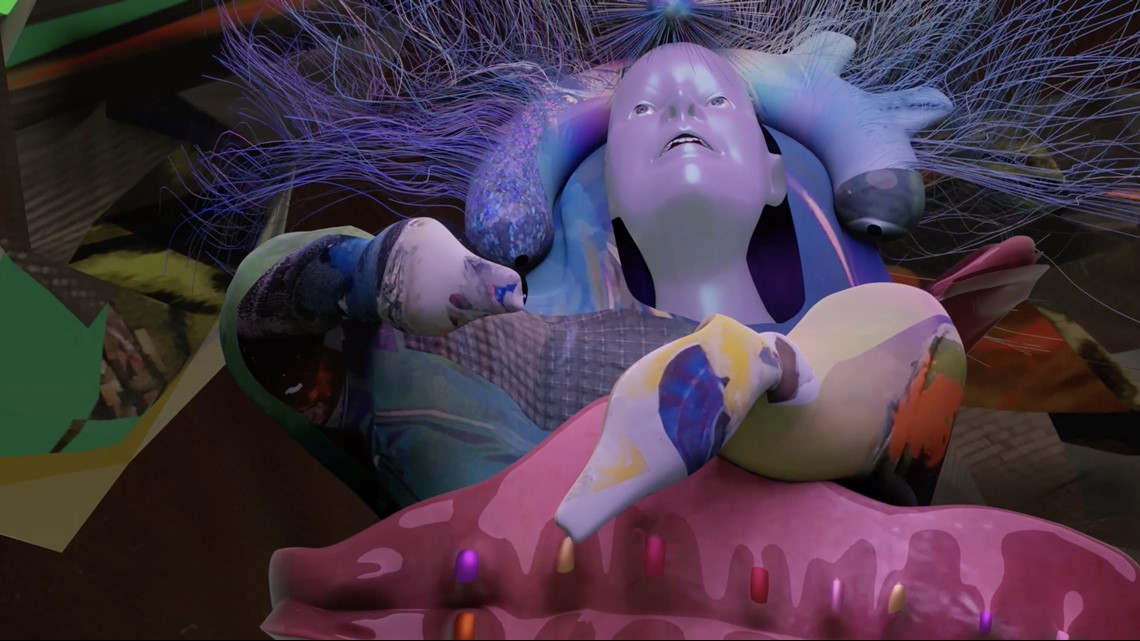
“My definition of drawing has changed from a relatively traditional understanding to one that encompasses a way of listening closely to the world, to try to understand patterns and how phenomena can affect someone,” Blizard says.
The animated sequences that make up “Cactus” has roots in the opera production she previously created for TCU, and if her piece incorporates various details that don’t quite seem like they should compliment each other, that’s part of the point.
“Building the materials and forms in a 3-D space was very similar to drawing or painting a figure,” she said. “I focus more on texture and spatial juxtaposition than narrative. So those are related to painting rather than commercial animation.”
Follow Blizard on Instagram at @christieblizard.
---

